As we head into summer, panfish are on the forefront of anglers’ minds. Catching big scrappy bluegills and sunfish is a special treat ushered in by warmer temperatures and longer days. Bluegills and sunfish have a unique eagerness to take a bait, and a resiliency not to give up once hooked. These turbo-charged, disc-shaped fish know how to turn sideways and use their body dynamics to their advantage. Small bluegills and sunfish provide a nice summer distraction for anglers looking for quick action; however, when these panfish get toward their top-end size, the task of catching them is not as easy. Anglers must take a different approach to be successful on big summer sunfish. Here’s how.
Think Deep
On big water fisheries, some of the largest bluegill and sunfish reside in deep water for all but the spawning period. These trophy fish find sanctuary in the depths. Here they are safe from the parade of panfish anglers tossing worms into the shallows for pint-size fish. To catch these deep-water giants, focus on outside weed edges and areas that offer transitions in bottom composition. These are prime feeding areas that offer stable water conditions throughout the summer. Use heavy, slender spoons that get to the bottom quickly. These baits create a buff of debris each time they make contact with the bottom and that attracts fish. Big bluegills are curious and will race over to determine if the offering is worth eating. To make these spoons even more irresistible, tip them with live bait or scented plastics.
Go Off the Beaten Path
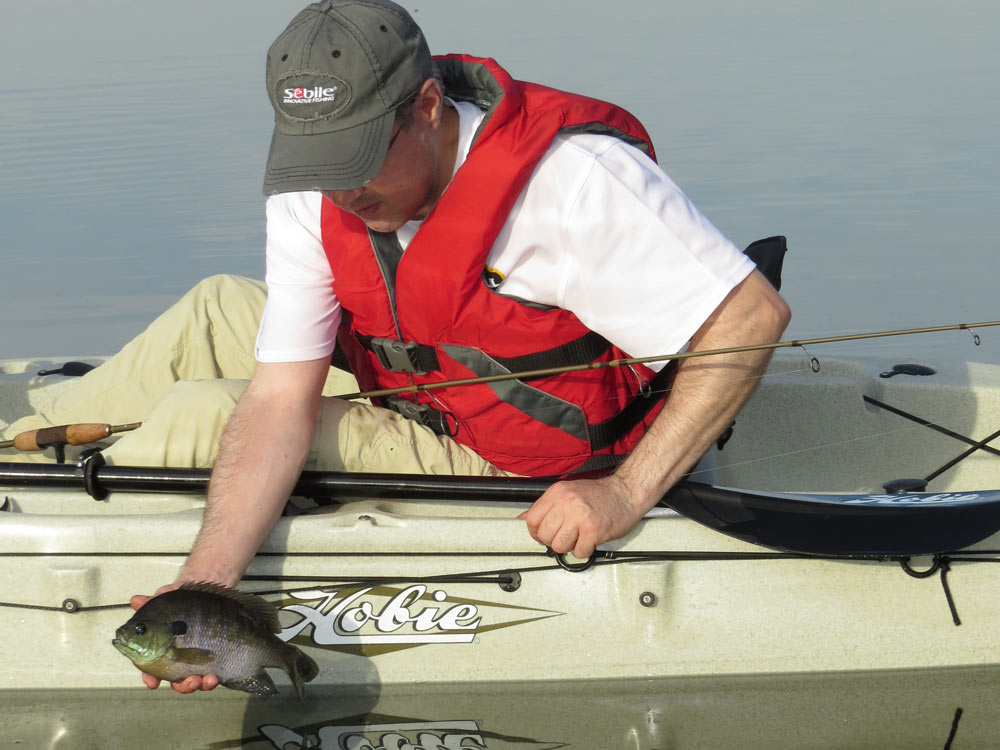
One of the keys in learning how to catch bluegills (and bigger ones) is exploring areas that are not accessible to boats with outboard motors. Kayaks, canoes, and float tubes allow anglers to present baits to unpressured fish. These fish are less cautious when approaching and taking a bait. Use online maps like Google Earth to locate waterways that other anglers aren’t fishing. You might have to do a little more paddling or hiking to get to these spots, but once you get there, you’ll be rewarded with eager bull bluegills.
Watch Your Weight
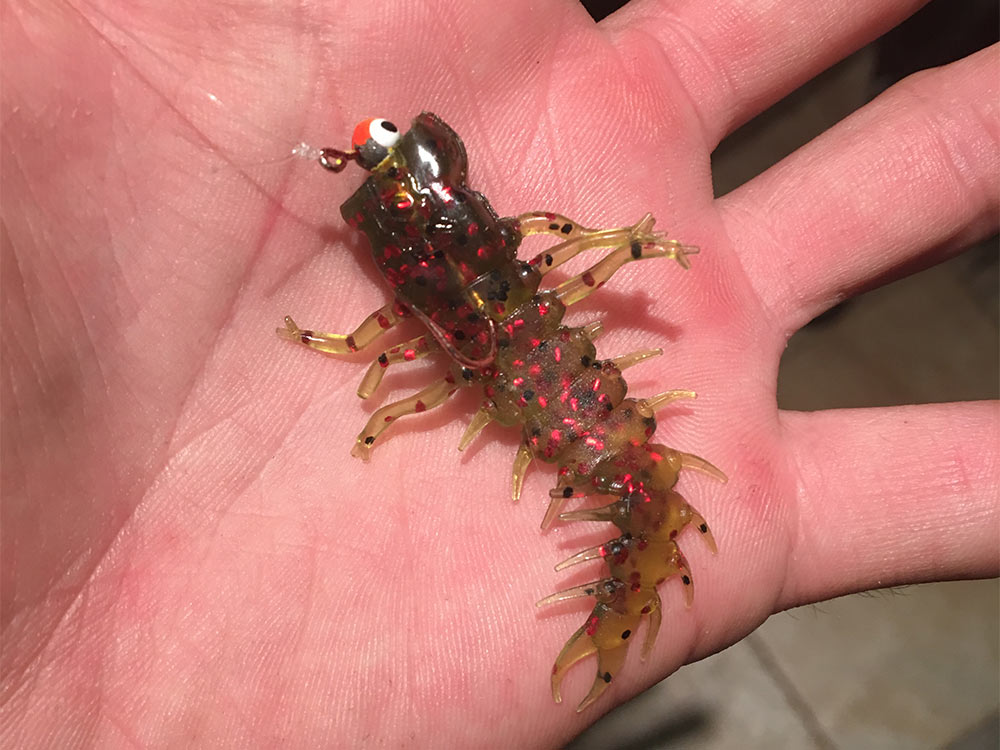
In nature, most food falls slowly through the water column. This gives fish the opportunity to identify and access the object as it makes its way from the surface to the bottom. A bait that falls too quickly often goes overlooked by nearby bluegills. Micro jig heads in the 1/80 – 1/16 oz. range, when fished on light 2- to 4-pound line, will provide a more natural presentation than heavier jigs. Be mindful that the dressing on these jigs will also change their fall rate. A thin, wispy, plastic tail on a 1/64 oz. jig head will fall more quickly than a flat creature style bait on the same size jig. Bulky plastic trailers have more surface area which act as a mini parachute as they displace more water on the fall. Natural dressing on jigs will also provide different fall rates and action of jigs. Feather dressed jigs, such as Custom Jigs and Spins Flu Flu jigs, hold their shape better and present a larger profile in the water than marabou dressed jigs. Marabou has the benefit of a more natural breathing motion to its fibers but has a faster fall rate. Rabbit hair jigs hold their shape better than most natural materials and fall more slowly due to their dense air-trapping fibers. These small differences in the dressing materials of jigs can make a big difference in triggering bites from trophy panfish.
Keep it Fresh
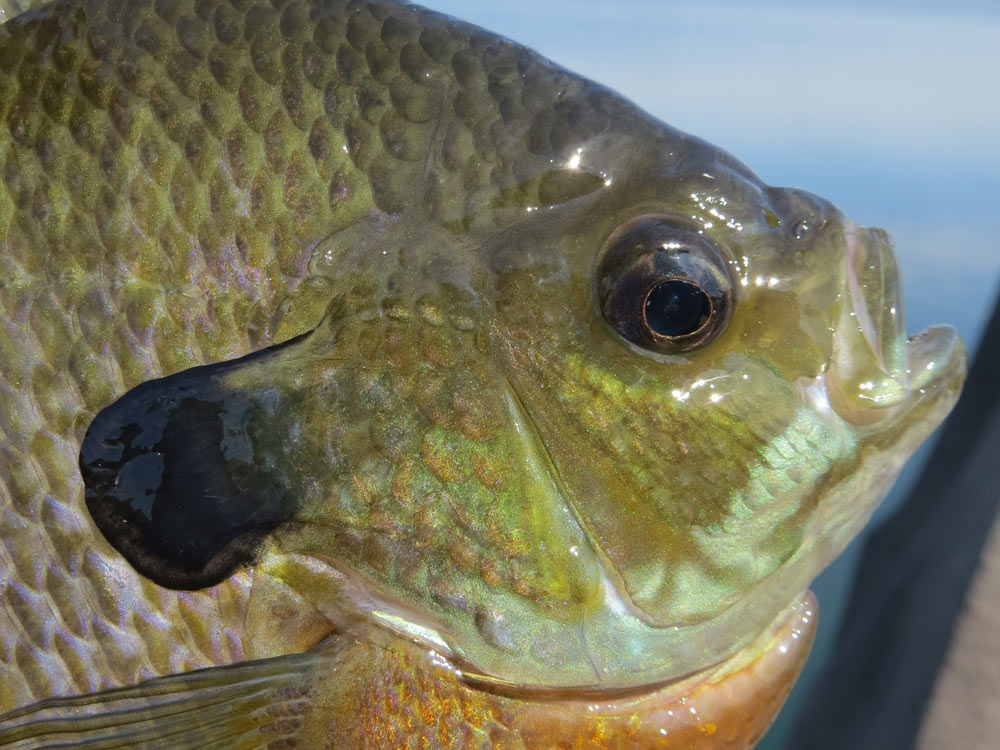
Whether it’s minnows, leeches, nightcrawlers or any other live bait, keep bait healthy and active to catch bigger bluegills. During the summer months, this means keeping bait cool. The oxygen holding capability of water decreases as the water temperature increases. Use insulated coolers and aerators to maintain well-oxygenated water levels for healthy baitfish. If minnows are coming to the surface of a bait container, they are already stressed. Change water as often as necessary and add frozen water bottles to bait containers to keep temperatures down. Nightcrawlers should be stored in coolers with ice packs and kept out of the sun. The power of healthy and active bait cannot be overstated.
Make Noise to Catch Big Bluegills
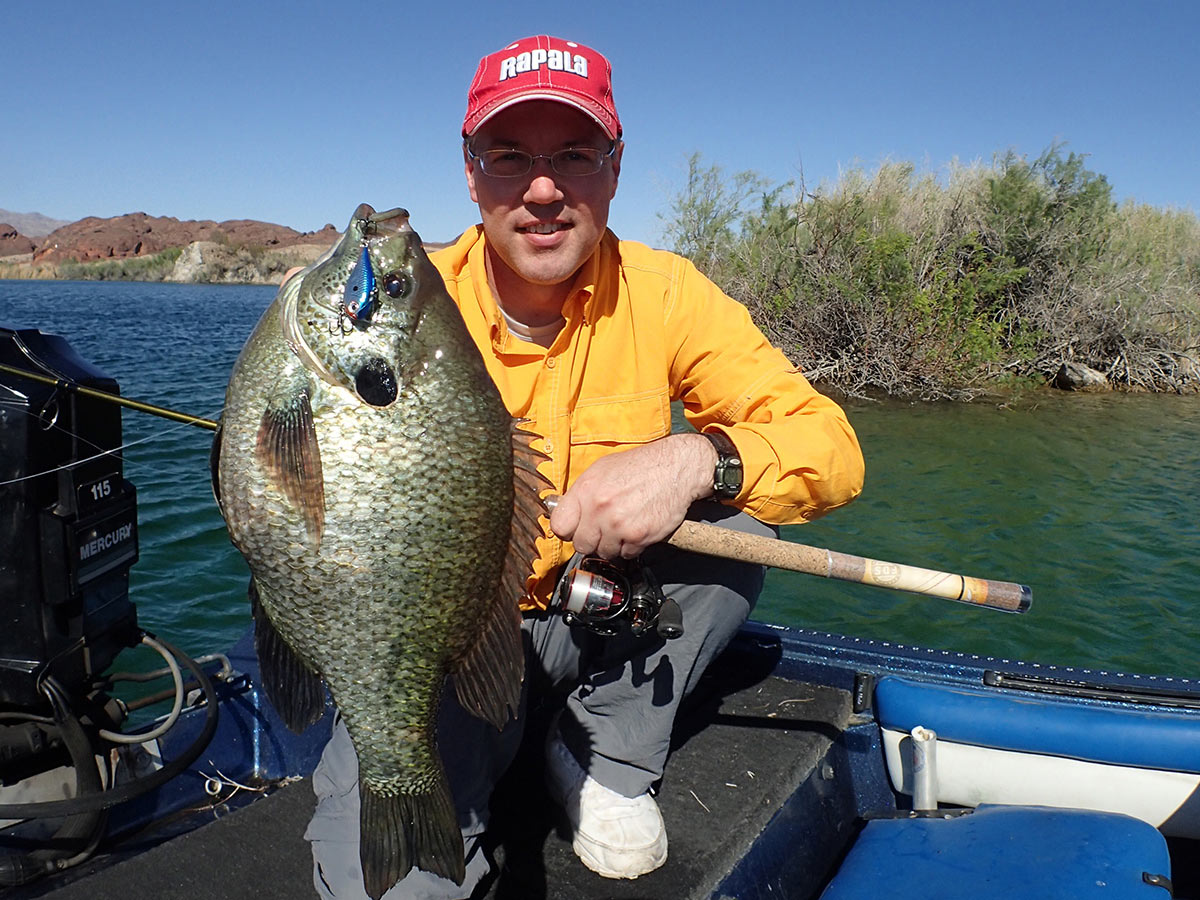
Trophy bluegills and redear sunfish enjoy crayfish as part of their diet. Crayfish make noise as they click their pinchers and scurry across rocks. Lipless crankbaits are great noise makers to get the attention of both actively feeding and roaming fish. Spool your reel with ultra-thin braided line in the 4- to 8-pound test to feel every vibration of the lure and to insure positive hook-sets in deep water. Use a rip-and-drop retrieve with these lures. Regularly make contact with the bottom to mimic a crayfish.
Target Overlooked Public Arenas
Public fishing piers and platforms are often built in prime coves and bays. Search out piers that are supplemented with man-made cribs or structures within casting distance of them. Structural elements attract and hold baitfish on a year-round basis. Big bluegills know where they can find food there on a consistent basis and regularly frequent those areas.
Float It by Them
Make the most of your time on the water by selecting the correct float for every situation. Classic, round fixed bobbers work sufficiently well in shallow water settings. Here they can be ripped forward to occasionally make a popper-like sound and attract fish to the bait suspended under them. Slip floats excel in deeper water where the bobber stop knot can be quickly adjusted to present a bait at any desired depth. Specialty bobbers like the weighted Rocket Bobber are unmatched for casting in windy conditions.
Read Next: 15 Hottest Lures for Panfish
Crank ‘Em Up
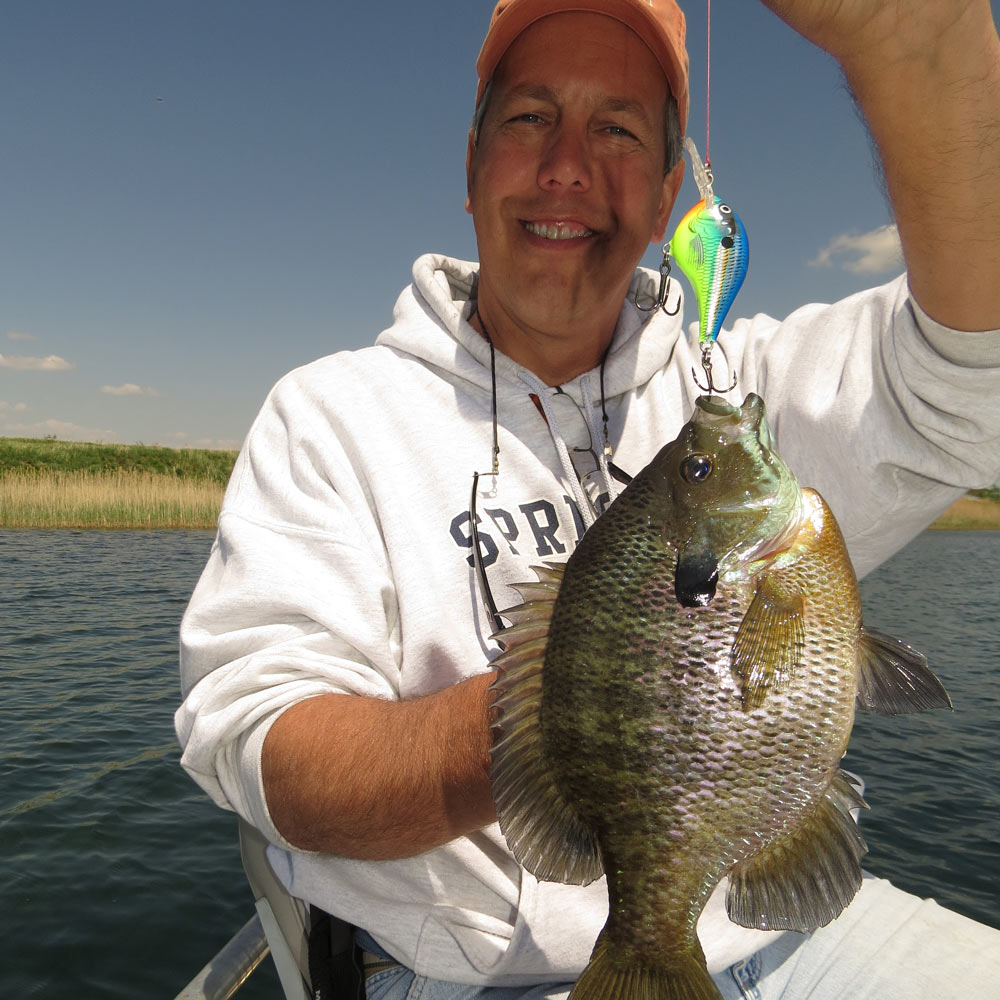
Bull bluegills are territorial creatures—especially during the pre-spawn and spawning periods. Mid-size crankbaits that resemble a challenging bluegill will draw the ire of big bluegills. They are all too eager to take on a meal that might at first glance look too big to fit into their mouths. A steady retrieve, at medium to fast speeds, will deliver the best results. Unlike gamefish that are often triggered into striking a crankbait on the pause, big bluegills tend to lose interest when the bait stalls.
Go Pond Hopping
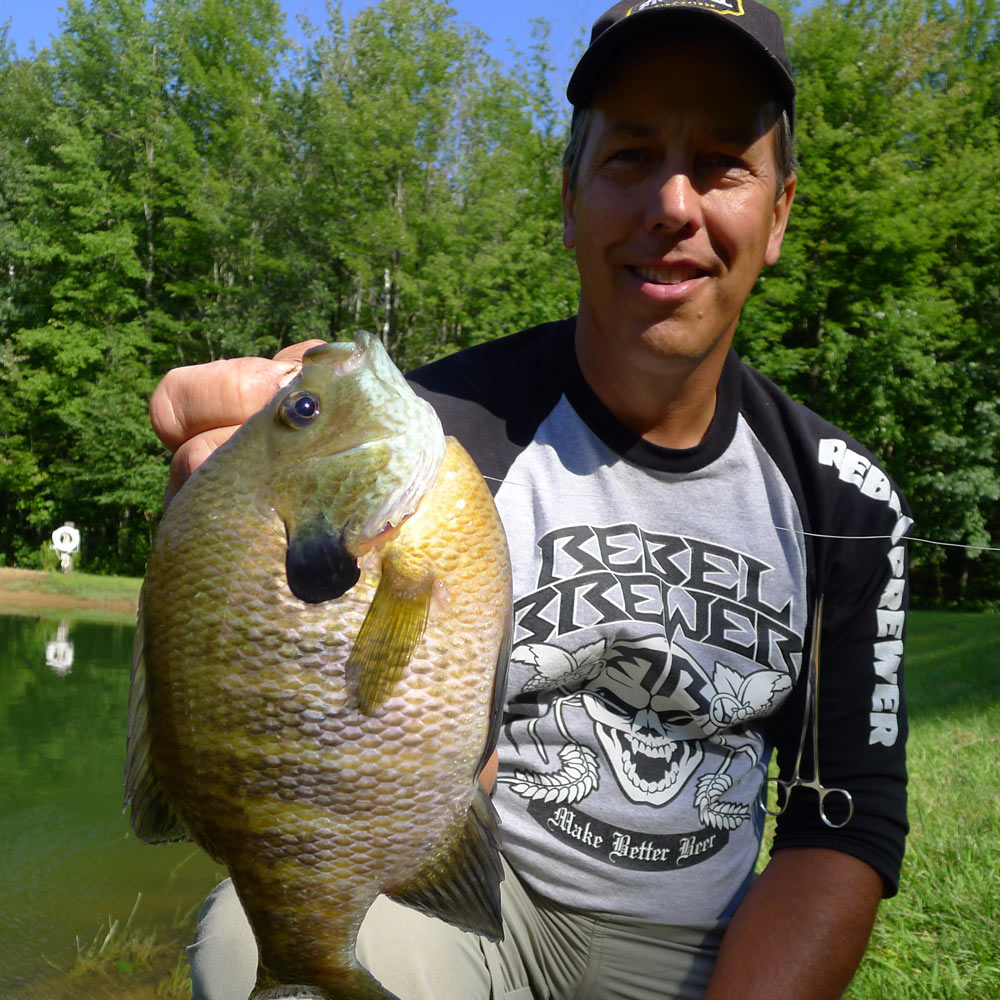
Ponds offer a remarkable opportunity for big bluegills. They take many forms, including manicured subdivision ponds, rural livestock watering and irrigation ponds, industrial retention ponds and natural seepage ponds. The first task is gaining access or permission to fish any ponds that are on private property. The next is identifying key fish-holding areas which include any inlets or outlets, weed patches, and initial deep breaks from shallow flats into the main basin of the pond. Because they’re small, ponds can be fished quickly and efficiently from shore. This makes them a great option when your fishing time is limited.
Bring the Kids

Catching big bluegills should be about having fun and nothing is more rewarding than getting kids in on the action. Taking kids fishing means keeping their attention and creating the most positive experience possible. That begins by selecting a location that offers a mix of fast action and trophy fish potential. Keep rigs simple and allow kids to do their own casting with bobbers and worms. Plan the outing during the prime late afternoon feeding period for big bluegills. Come ready with snacks and drinks. The longer you can keep kids happy and engaged on the water, the greater their chance of catching big bluegills and having a memorable experience.
Read Next: Sunfish vs Bluegills Identification Guide
Dig Your Own Worms
Nothing catches more bluegills than live bait and there is no better live bait to use than worms. You can, of course, buy worms at the local bait shop, but sometimes the better (or only) choice might be to gather your own. Here are three great ways to get worms. A few shovels will get you enough worms for a couple of days.
Nightcrawlers, of course, make for the best bait whether you’re trying to catch bass or panfish. To grab up enough crawlers for a day’s fishing, spray down a section of lawn just before dark. Grab your headlamp and check the spot that you watered down several hours later. Be quick—crawlers are fast. Read our full guide on how to catch nightcrawler for bait.
Read Next: Fly Fishing for Bluegills: A Guide to the Easiest Bite of Summer
Final Thoughts on How to Catch Bluegills
If you want to catch big bluegills, you have to target waters that have them. Remember that just because a lake is home to a lot of panfish doesn’t mean that it will hold big ones. The fun part is that big bluegills can live in small ponds that are off the beaten path or the deep weed beds of giant lakes. Bluegill size is often a factor of fishing pressure and harvest regulations. So it’s a good idea to research your state’s regulations and management plans. Lakes that are specifically managed to grow quality panfish are a good bet. Once you’ve identified a trophy panfish water, respect the resource. Keep what you need a for a fish fry and let the rest go.
